Losing it in Translation at Mount Fuji
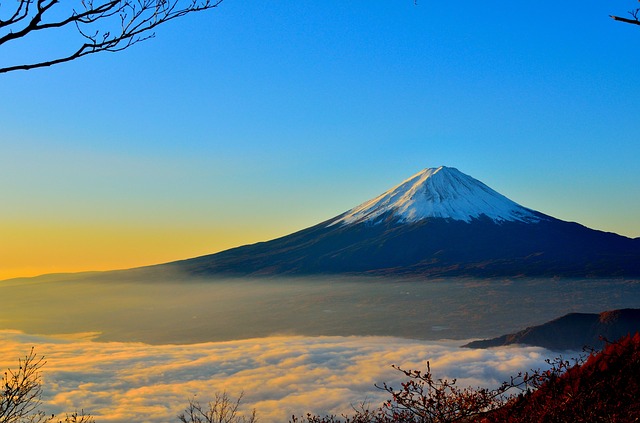
I spent a long time trying to perform the meaning of the word “iconic” to my students. I used various full-body gestures, synonyms, and visual aids, but it wasn’t until I started to talk about Mount Fuji that the meaning finally clicked.
Fuji’s swooping curvature has graced the blank space of bags, t-shirts, tea-towels, and stationary sets since an international identity was curated for Japan. When Hokusai’s images were first circulated overseas, it was the great wave that captured the Western imagination. However for the Japanese, his compression of the mountain in pink, red, and blue served as both national treasure and symbol of the dream of man’s harmony with a mysterious and forbidding nature. Fuji’s power transmitted extravagance and performance in its spread-wing outline, opposing the mundane boundaries of everyday existence. It offered the possibility of transgression within the landscape, to an entire people.
With this is mind, the icon was already a well-established part of my cultural vocabulary before I saw it. Or so I thought. I’d been teaching at a University in Tokyo for a few months and the crowds were becoming stifling. I could sense an imminent breaking point after weeks of packed commutes and sketched-out visions of Dante’s inferno re-written with salary men and sake. So I decided to take a bus out to see Fuji for myself.
Here, trees are spread over 30km and are so densely packed that no natural sounds can be heard, no GPS system can function, and deviation from the trail has led many to take their own lives.
The drive was slow, full of stops and starts, the sheer number of people forcing their way into more space, the pattern of that space being filled, another push, another filling. When we finally made it to Lake Kawaguchiko I could still feel people. But for one thing, the clouds had parted and Fuji’s snow-capped crown pushed through the blue furnace of abyss. I had no intention of climbing it, I only wanted to view “the real thing”, off the canvas, from as many isolated spots as I could summon.
Mapless and on foot, I hiked up to a viewpoint. I stumbled across it by accident, desperate to forgo the concrete trail around the lake’s water-edge lined by plastic swan peddle boats and souvenir shops. I headed upwards, armed with fruit beers. At the entrance to the climb stood a small temple. A sweaty middle-aged man descended the steps in a tracksuit. I passed him, wondering if that’s what I would look like on the way down.
Peeping through dirty windows, I could see a small wooden room. There was no shrine, but instead a font-like sink with an ornate dragon’s head spitting water from its mouth. I thought not of serenity or fortune, but of Chinatown and secret gambling deals. Already, I was on the road to somewhere strange.
I continued the climb, picking up my pace to pass a large walking group. People. Again. Pushing on through the hydrangea path, my thoughts were taken by the mountains. Memories of other mountains I had visited passed before me like an old picture show. The Himalayas; Kashmir, where ice-cold lakes stood in summer heat, refusing warmth, and me bare-footed in the wild flower fields. The Isle of Skye, where the towering cliffs shocked me into another world far from the “home” I call the UK. Eagles descended from wooden huts somewhere in my recollections. I looked up then and could see huge brown hawks skirting the silence.
A mushroom grew half way up a bending tree, bright blue flowers were clustered at the base of dark moss, the suffocated arteries of vegetation made new inroads. I was out then, in the open, breathless in body and mind from the echo-chamber.
When I reached the top, I sat in awe of something. The icon had suddenly lost its status of representation; it was all there to feel. From here I could see the whole outline. In a people-less place for the first time in months, I simply couldn’t stop looking.
On the way back down I kept glancing behind me. It felt as if the mountain was following me with its vast mass. Sometimes it disappeared completely behind clouds, leaving a disorientating feeling. After the shock of the real, I decided to hire a bike and head up to the infamous “sea of trees” (Aokigahra) or “suicide forest”. Here, trees are spread over 30km and are so densely packed that no natural sounds can be heard, no GPS system can function, and deviation from the trail has led many to take their own lives. As with the shadow-play of Mount Fuji, in its own Kabuki drama of spontaneous appearance, I had to find this place.
The forest is located behind Lake Saiko, a much greener and quieter spot. Unpopular with tourists, it’s mostly a haunt for local Japanese fishermen. I struggled up the spiralling incline, clinging onto my short handlebars. The road was marked every so often by a concrete tunnel that passed underneath the peaks. Speeding underground through these loud caves of modernity, the orange light gave me nuclear thoughts. Luckily I became caught up in a line of lycra-clad cyclists, who took it in turns to shelter me from the traffic. For this, I am ever grateful.
Emerging out the other side, some of the road was closed off for a marathon. As I flew by guiltily on the other side, I cheered the runners along. From their movements I guessed they didn’t have far left to go. Neither did I. I pulled up outside an entrance to the forest and parked my bike. There is a main gate, lined by official signs telling people to remember the worth of their lives. But there are also many side entrances that tail off onto the surrounding roads. For the sake of a theme, I chose one of these unofficial trails, thinking it would enhance a sense of dislocation. It certainly did.
The icon was already a well-established part of my cultural vocabulary before I saw it. Or so I thought.
As I wandered inside, the noise of living stopped. The trees folded into one another in complex and impossible patterns, like the wild scribblings of a bored child. Leads began and ended nowhere, the noise of confusion was made horrifically internal. Thoughts started; questions and hypotheses were posed. As I followed these interrogations along the roots, they became tangled, impossible to finish, eternally answerless. Here, I began to discover, the riddle of existence is amplified.
After a while, alone and unsure of how far I’d walked, I decided to turn around. Fuji was long gone and nobody knew I was here, if this was a place at all. I followed the trail exactly as I had come, yet some things looked startling different in reverse. A mushroom grew half way up a bending tree, bright blue flowers were clustered at the base of dark moss, the suffocated arteries of vegetation made new inroads. I was out then, in the open, breathless in body and mind from the echo-chamber. I longed again for the clarity of the mountain, the smooth edges, the stylised icon. But, of course, I thought to myself on the ride back, I had already known it was never that simple.
Photo for Losing it in Translation at Mount Fuji by Pixabay.


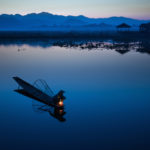

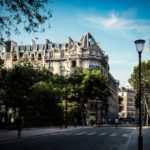
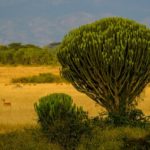

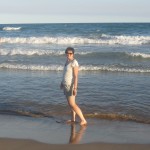
Hey! Of course I remember you. I would love to stay in touch. I don’t have Facebook either but here is my email [email protected]
I’m doing a PhD at the moment and will be over in the states next year. I’ll be coming down to Alabama so it would be great to see you again.
I hope life is treating you well. Email me! Love x
Hi Lucy,
I am not sure if you remember me or not. We met while you were in the US. We went to Bama together and were both in Steve’s class (he taught the Romantics). I took you to the airport a few times.
Anyway, I got to thinking about your blog and decided to look you up. I deleted my Facebook a while back, so I am sorry if we lost contact. I would love to reconnect.
Yours,
K.